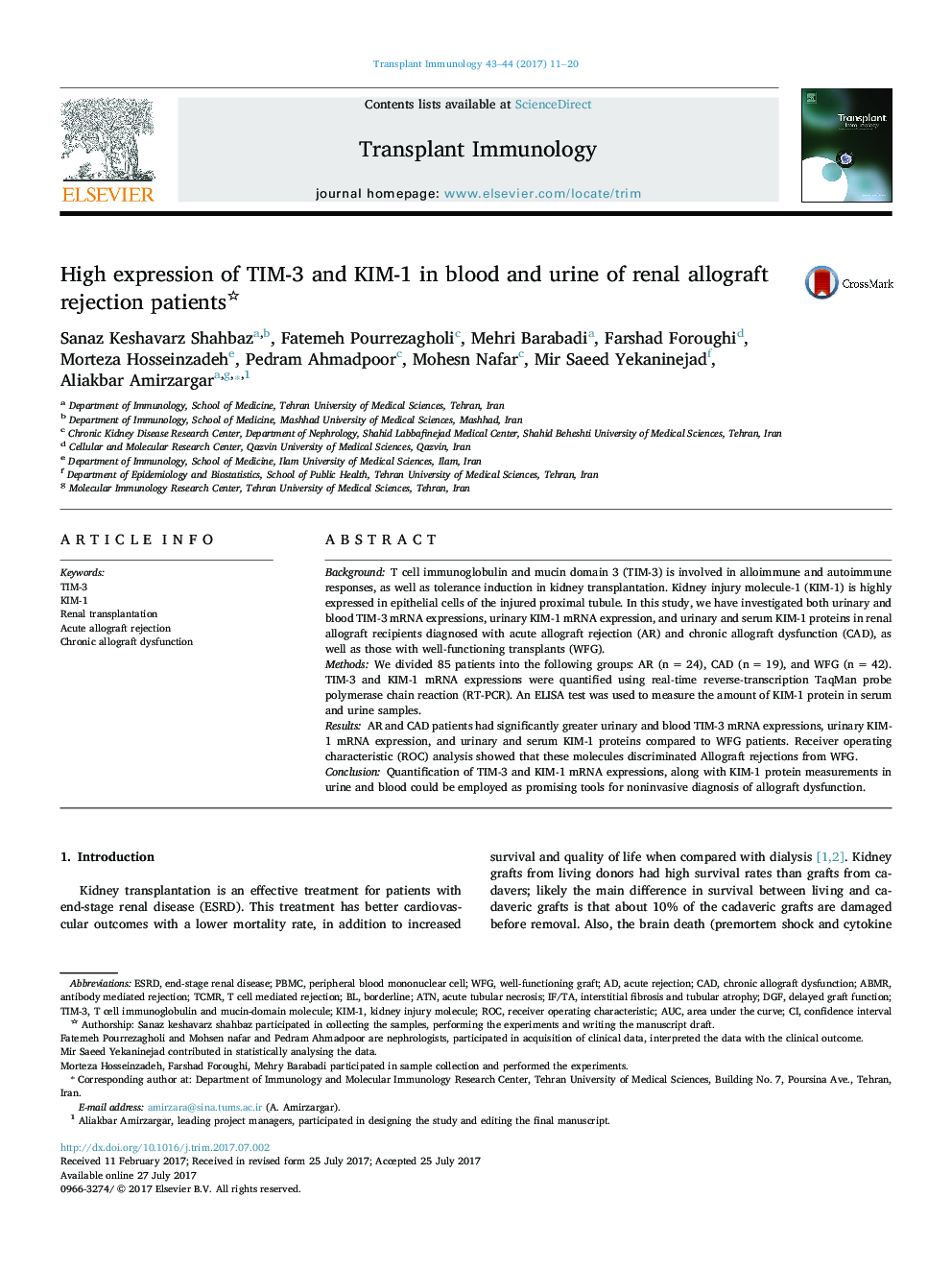| کد مقاله | کد نشریه | سال انتشار | مقاله انگلیسی | نسخه تمام متن |
|---|---|---|---|---|
| 5670435 | 1592665 | 2017 | 10 صفحه PDF | دانلود رایگان |

- AR and CAD patients have higher u/bTIM-3, uKIM-1 mRNA, and u/s KIM-1 proteins compared to WFG patients.
- Receiver operating characteristic (ROC) analysis showed that these molecules discriminated Allograft rejections from WFG.
- TIM-3 and KIM-1 mRNA expressions, with KIM-1 protein measurements in urine and blood could be noninvasive biomarkers.
BackgroundT cell immunoglobulin and mucin domain 3 (TIM-3) is involved in alloimmune and autoimmune responses, as well as tolerance induction in kidney transplantation. Kidney injury molecule-1 (KIM-1) is highly expressed in epithelial cells of the injured proximal tubule. In this study, we have investigated both urinary and blood TIM-3 mRNA expressions, urinary KIM-1 mRNA expression, and urinary and serum KIM-1 proteins in renal allograft recipients diagnosed with acute allograft rejection (AR) and chronic allograft dysfunction (CAD), as well as those with well-functioning transplants (WFG).MethodsWe divided 85 patients into the following groups: AR (n = 24), CAD (n = 19), and WFG (n = 42). TIM-3 and KIM-1 mRNA expressions were quantified using real-time reverse-transcription TaqMan probe polymerase chain reaction (RT-PCR). An ELISA test was used to measure the amount of KIM-1 protein in serum and urine samples.ResultsAR and CAD patients had significantly greater urinary and blood TIM-3 mRNA expressions, urinary KIM-1 mRNA expression, and urinary and serum KIM-1 proteins compared to WFG patients. Receiver operating characteristic (ROC) analysis showed that these molecules discriminated Allograft rejections from WFG.ConclusionQuantification of TIM-3 and KIM-1 mRNA expressions, along with KIM-1 protein measurements in urine and blood could be employed as promising tools for noninvasive diagnosis of allograft dysfunction.
Journal: Transplant Immunology - Volumes 43â44, August 2017, Pages 11-20